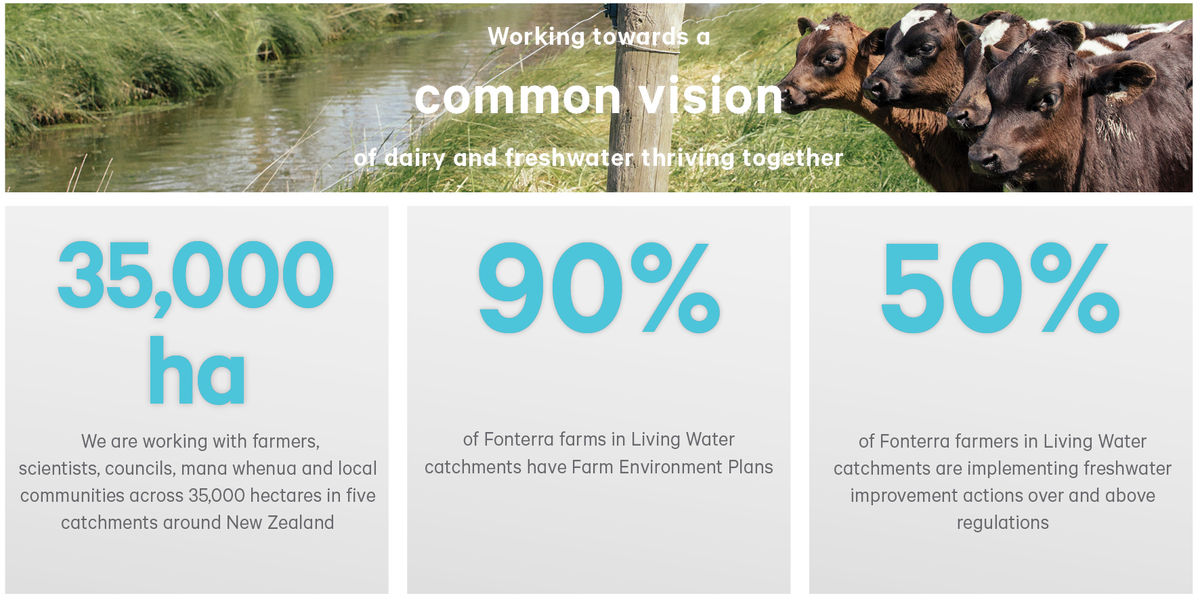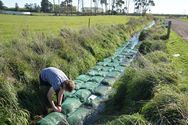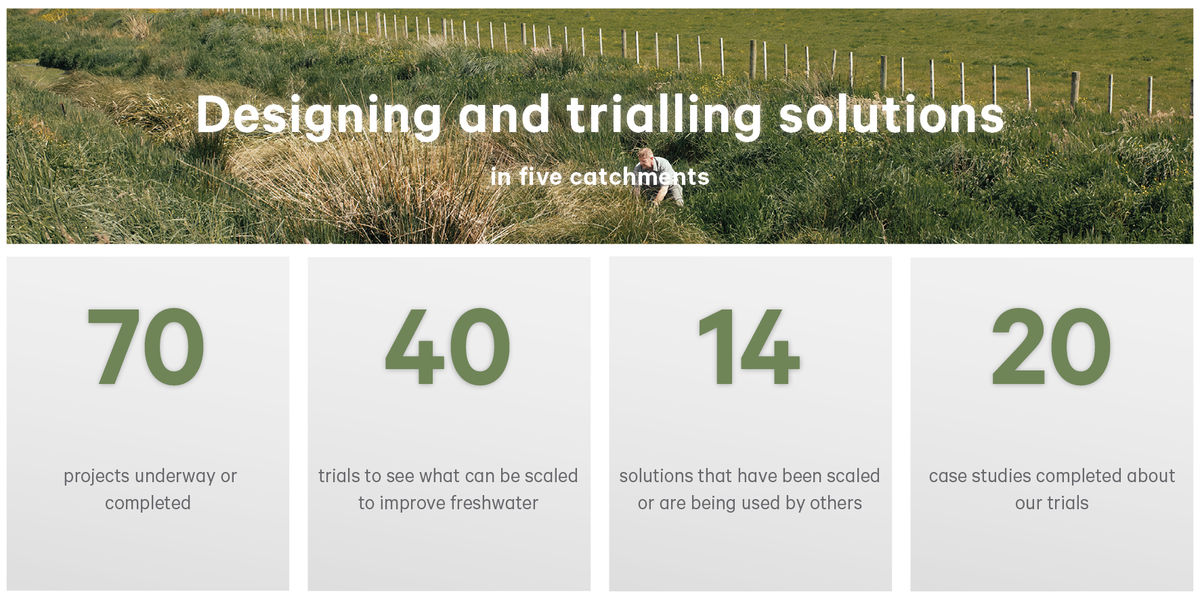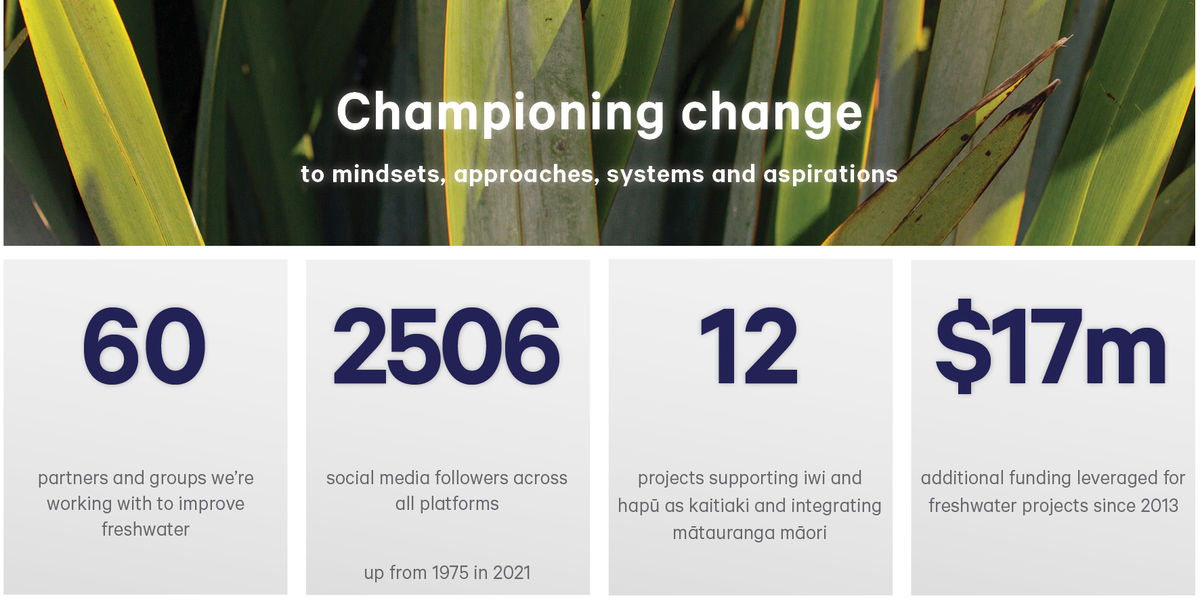
Progress summary update 2021/2022
Living Water, the ten-year partnership between the Department of Conservation and Fonterra recently celebrated nine years of working together to enable farming and freshwater to thrive side-by-side / Te puāwai ngātahi a te mahi pāmu me te wai māori.
Take a look at the partnership’s key achievements across the five catchments and nationally ⬇️
WORKING TOWARDS A COMMON VISION OF DAIRY AND FRESHWATER THRIVING TOGETHER
90% of Fonterra farms in Living Water catchments have Farm Environment Plans and 50% of Fonterra farmers in Living Water catchments are implementing freshwater improvement actions over and above regulations. There has been a steady growth in voluntary implementation of freshwater improvement actions, from 40% in 2020, 48% in 2021 and now 50%.
Together we’ve accelerated on-farm change, but we know improving freshwater requires more than just on-farm action. The future of farming will be different and we’re working on what this could look like for farming and freshwater.


DESIGNING AND TRIALLING SOLUTIONS IN FIVE CATCHMENTS
We have 70 projects underway or completed across the motu. Head over to the tools and solutions page to see them all.
The projects range in scale from on-farm to catchment scale, plus we’re looking at how social initiatives and joint projects can bring key groups together to improve freshwater.
On farm, we are trialling small-scale interventions like sediment traps, bioreactors and two-stage channels. If these trials are successful, they can be written into Farm Environment Plans (FEPs) to ensure on-farm tools work alongside larger catchment scale interventions.
Catchment scale approaches need to ensure the right tools are being used in the right place, based on data collected from within the catchment. We have recently completed a trial of two detention bunds in Northland, to reduce sediment entering the Wairua River. The trial reinforced the regions’ complex geology and soils, and highlighted the need for a landscape level assessment to identify suitable locations and size bunds appropriately. One of the bunds we trialled was undersized for the size of the contributing catchment, giving inconclusive results, although the second (correctly sized) showed promising results.
The complexities of landscapes have a huge influence on the way water travels above and below land. Natural variability in landscape settings (underlying soil, geology, hydrology) can have more influence on water quality outcomes than land use alone. Currently landscape information is not readily available to landowners and managers so we’re working with new science provided by LandscapeDNA to make this data accessible via online dashboards. This data can be integrated into FEPs as well as inform wider catchment plans like where to place constructed wetlands, detention bunds or where bigger action should be investigated like retiring land from farming.
If land is retired from farming for restoration, there needs to be a transition plan and on-going management. In the Pūkorokoro-Miranda catchment, we trialled a process called Incubate to set up a community trust with stakeholders that have different backgrounds and aspirations to manage restoration goals for a 19.6ha of retired farmland adjacent to a significant area of shorebird habitat. Thanks to the Incubate project, a restoration plan and a five-year implementation strategy for the reserve are underway.


CHAMPIONING CHANGE TO MINDSETS, APPROACHES, SYSTEMS AND ASPIRATIONS
Over nine years we’ve developed 60 partnerships at place and nationally. By partnering we are making it easier for farmers, iwi and communities to accelerate freshwater improvement.
In the Ararira-LII we’ve been used the lessons learned over nine years to propose a different way of managing lowland drains and waterways to provide drainage as well as supporting native biodiversity. We partnered with Te Taumutu Rūnanga, Selwyn District Council, LII Drainage Committee and Environment Canterbury to produce a Catchment Management Plan and Implementation Guide. These were presented to the Selwyn District Council in August 2022 with the aim of getting the plan into the Council’s Long-term Plan (LTP) process to secure funding for future years. Read about the project here.
Twelve of our projects support iwi and hapū as kaitiaki and integrate mātauranga māori. In Wairua, Northland, Living Water is supporting the development of Kaitiaki Networks following the research findings of the Te Kawa Waiora project. This two-year project focused on bringing together the people of the awa through hui wānanga, to discuss a new pathway of ecological management, based in mātauranga Māori. The report concluded that the only way for tangata whenua and their awa is work that is led by those who whakapapa to the area and can drive grassroots action alongside their communities. A major part of the project was ensuring that the communities who participated in the research were able to build the skills and capacity to continue their own discovery. By collaborating with local iwi and hapū in each catchment the scale and impact of our work grows further.
We’re creating partnerships because no single organisation or sector has all the skills, knowledge and influence to improve freshwater. With Living Water officially finishing in 2023 we want the partnerships to continue the kaupapa and mahi for freshwater.
Download the full report here

